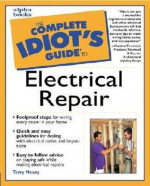hbiss
EC, New York NEC: 2017
- Location
- Little Falls, New York NEC: 2017
- Occupation
- EC
And that's exactly the kind of person who has no business doing electrical work!! I'm sure you can find a book or video on how to remove your appendix. Good luck with that too.But my main point of contention wasn't so much ease of access, but with the notion that the NEC needs to be dumbed down so that it would be intelligible by someone who doesn't know anything about electricity.
-Hal




